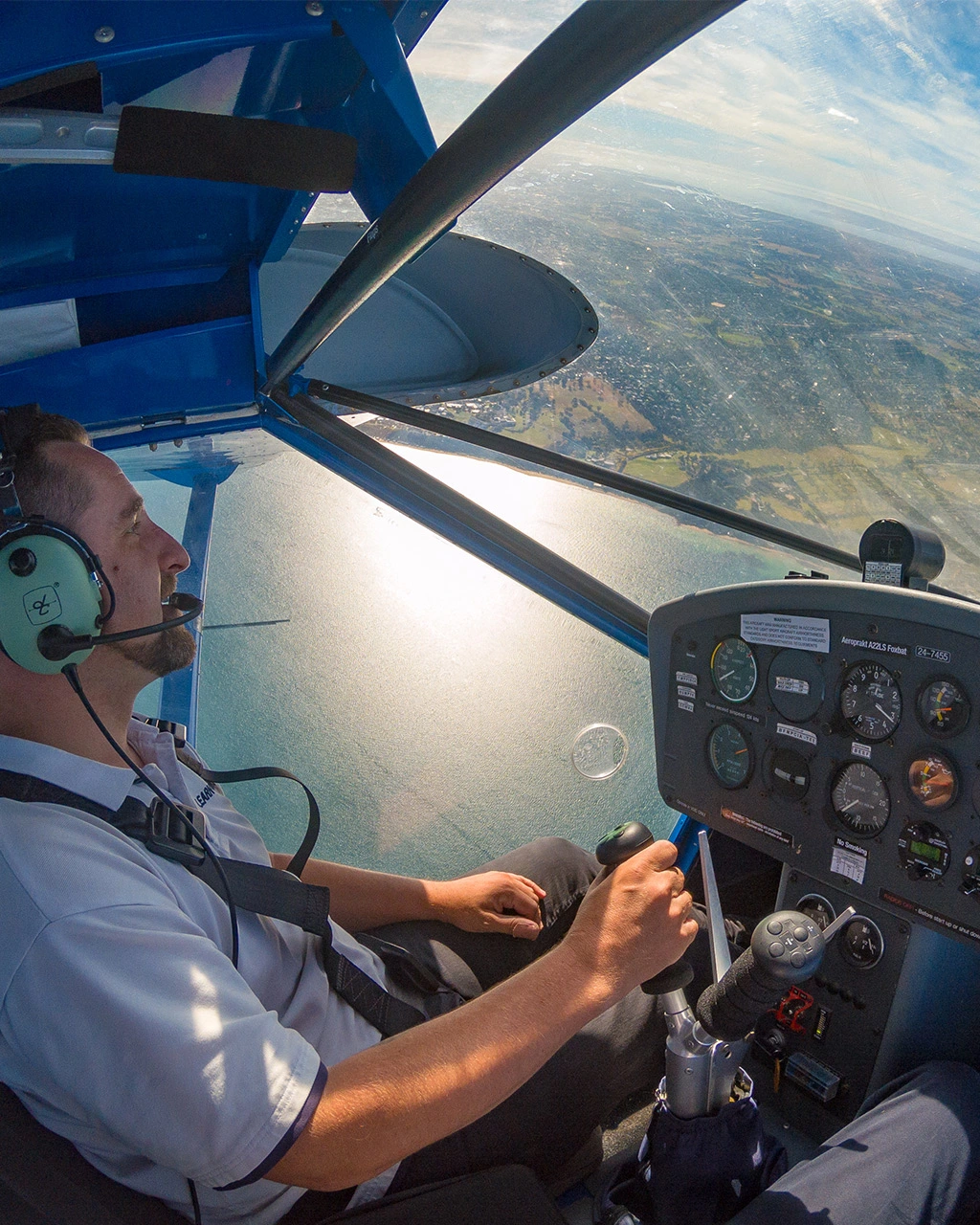
June 13, 2024
Pre-Flight Briefing and Aircraft Familiarisation during A TIF
The trial introductory flight (TIF) is an exciting first step for aspiring pilots, providing a practical glimpse into the world of aviation.
Essential components of this experience include the pre-flight briefing and aircraft familiarisation. These elements are crucial for ensuring safety, understanding the flight’s objectives, and building confidence.
Importance of pre-flight briefings
Pre-flight briefings aid effective communication between the pilot and the participants, laying a solid foundation for a safe and educational flight experience. For those embarking on a trial introductory flight (TIF) a thorough pre-flight briefing enhances safety and maximises the educational value of the flight.
A thorough pre-flight briefing addresses various safety aspects, including emergency procedures, aircraft handling, and specific protocols for different flight phases. By understanding these elements, participants can contribute to maintaining a secure environment during their trial introductory flight.
A pre-flight briefing outlines the objectives of the flight. This includes explaining what will be demonstrated, the manoeuvres to be performed, and the expected learning outcomes. By clearly defining these goals, the instructor ensures that the participant knows what to anticipate and can focus on gaining maximum value from the experience.
A comprehensive pre-flight briefing introduces the standard operating procedures (SOPs) followed during the flight. This includes communication protocols, flight patterns, and specific tasks the participant may be allowed to handle. Familiarity with these procedures enhances the participant’s situational awareness and reduces anxiety.
Weather conditions significantly impact flight safety and comfort. The instructor will provide a detailed weather report during the pre-flight briefing, including visibility, wind conditions, and potential weather hazards. This information helps participants understand how weather affects flight dynamics and decision-making processes.
For many, a TIF is their first close encounter with an aircraft’s cockpit. The pre-flight briefing serves to build confidence by reducing the unknowns associated with flying. Detailed explanations about the flight’s flow, what to expect, and the instructor’s role help participants feel more at ease and engaged.
These briefings provide a comprehensive framework that supports safety and learning by focusing on safety assurance, clarifying flight objectives, familiarising participants with standard procedures, considering weather conditions, and building confidence.
Key aspects of pre-flight briefings
- 1. Introduction and Overview: The briefing typically begins with an introduction to the instructor and a general overview of what will be covered. This sets the stage for a structured and informative session.
2. Flight Plan Review: The instructor presents the planned flight route, including take-off and landing airports, waypoints, and any alternate routes if necessary. This segment may also involve discussing airspace regulations and traffic patterns.
3. Aircraft Systems and Controls: Participants receive a basic overview of the aircraft’s key systems and controls. This includes the primary flight controls, engine operations, navigation systems, and communication equipment. Understanding these components is crucial for a coherent flight experience.
4. Safety Protocols: A detailed discussion of safety protocols covers emergency procedures, the use of safety belts, and actions to be taken in case of various contingencies. The instructor also explains how to operate the aircraft’s safety equipment.
5. Role Clarification: The instructor delineates the roles and responsibilities during the flight. This includes explaining what the participant will be allowed to do, such as controlling the aircraft under supervision or observing specific procedures.
Aircraft familiarisation
Aircraft familiarisation starts with a thorough walk-around inspection of the aircraft. This process, known as the pre-flight check, involves examining the aircraft’s exterior for any signs of damage, checking control surfaces, verifying fuel levels, and ensuring all lights and static ports are functional.
Once the exterior check is complete, participants move to the cockpit. Here, the instructor provides a detailed overview of the cockpit layout, including the location and function of various instruments and controls. This familiarisation helps participants understand the aircraft’s operational environment.
A significant part of cockpit familiarisation involves explaining the instrument panel. Participants learn about the primary flight instruments, such as the altimeter, airspeed indicator, attitude indicator, and navigation displays. Understanding these instruments is vital for grasping how pilots monitor and control the aircraft during flight.
The instructor explains the aircraft’s control systems, including the yoke or control stick, rudder pedals, and throttle. Participants may get hands-on experience with these controls while the aircraft is on the ground, helping them become accustomed to their feel and operation.
Effective communication is crucial in aviation. The instructor demonstrates how to use the aircraft’s communication equipment, including the radio and intercom systems. Participants learn basic radio procedures and phrases used in aviation communication.
A review of the aircraft’s safety features is essential. This includes understanding how to use seat belts, locate and operate emergency exits, and access safety equipment like fire extinguishers and life vests.
Participants observe the engine start-up procedures, which include pre-start checks, engaging the starter, and monitoring engine parameters. This exposure helps them understand the importance of systematic checks and procedures in ensuring flight safety.
Before takeoff, the instructor demonstrates taxiing procedures, explaining how to control the aircraft on the ground. Pre-takeoff checks are conducted to ensure it is ready for flight, covering systems checks and verifying instrument readings.
Pre-flight briefings and aircraft familiarisation are integral parts of a Trial Introductory Flight (TIF). They ensure that participants are well-prepared, informed, and confident as they may one day pursue obtaining a private pilot licence in Australia or Singapore. By understanding the importance of these preparatory steps, aspiring pilots can maximise their learning experience and build a solid foundation for their aviation careers.
Instructors deliver comprehensive pre-flight briefings and guide participants through the intricacies of aircraft familiarisation. These steps enhance safety and enrich the overall experience, making the TIF an invaluable first step in a pilot’s journey. Whether you are considering a trial introductory flight in Melbourne or Singapore, thorough preparation and familiarisation remain the cornerstone of effective flight training.








